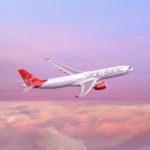The Federal Aviation Administration (FAA) has outlined the conditions and changes needed before the Boeing 737 MAX can resume commercial flights.
The aircraft has been grounded since March 2019 after crashes in Indonesia and Ethiopia which killed 346 people. Both crashes involved the 737 MAX’s Maneuvering Characteristics Augmentation System” (MCAS) pushing the aircraft’s nose downwards. In both accidents, the MCAS system could not be overridden despite erroneous data.
The FAA has made a number of proposals following an 18-month review into the planes. The review, announced yesterday, outlined the conditions and changes needed for the recertification for the plane to be returned to the skies in a new airworthiness directive.
Four design changes needed
The regulator’s directive requires Boeing to bring in four design changes to address the issues: updating flight-control software, revising display-processing software to generate alerts, revising certain flight crew operating procedures, and changing the routing of some wiring.
One of the required changes is for the MCAS to activate only after receiving data from two AOA sensors, rather than the one engaged in the past. Reports found that the pilots of both of the crashed planes had struggled with erroneous readings from sensors which calculate the angle of flight.
A second requirement will mean the MCAS can only engage once after receiving AOA data, rather than cause repeated downwards pitches. This will enable pilots to fly manually rather than have to figure out how to disengage MCAS.
Software update required
The FAA also wants a software update so that crew are alerted if two AOA sensors disagree and changes to the flight deck to reflect the fact that it will no longer be appropriate to report that the sensors are inoperable. The FAA has also proposed that an Angle Of Attack (AOA) sensor system test and an operational readiness flight be performed on each plane before it returns to service.
Changes to horizontal stabilizer trim wire routing installations are also required, to give pilots better control along with changes to flight manuals and operating procedures. Boeing has already conducted 737 MAX test flights and has suggested the aircraft could be back in the air by the end of 2020.
Works will enable 737 MAX to fly safely
The FAA have said its changes will minimise “dependence on pilot action and the effect of any potential single failure.”
On completion of the required works, the FAA has said that “the 737 MAX will be safe to operate and meet FAA certification standards” but has given no indication on when the aircraft could return to service.
Boeing is reported to have paid at least $19bn in compensation for the failures of the 737 MAX to families of the deceased, payments to airline customers and lost revenue.

